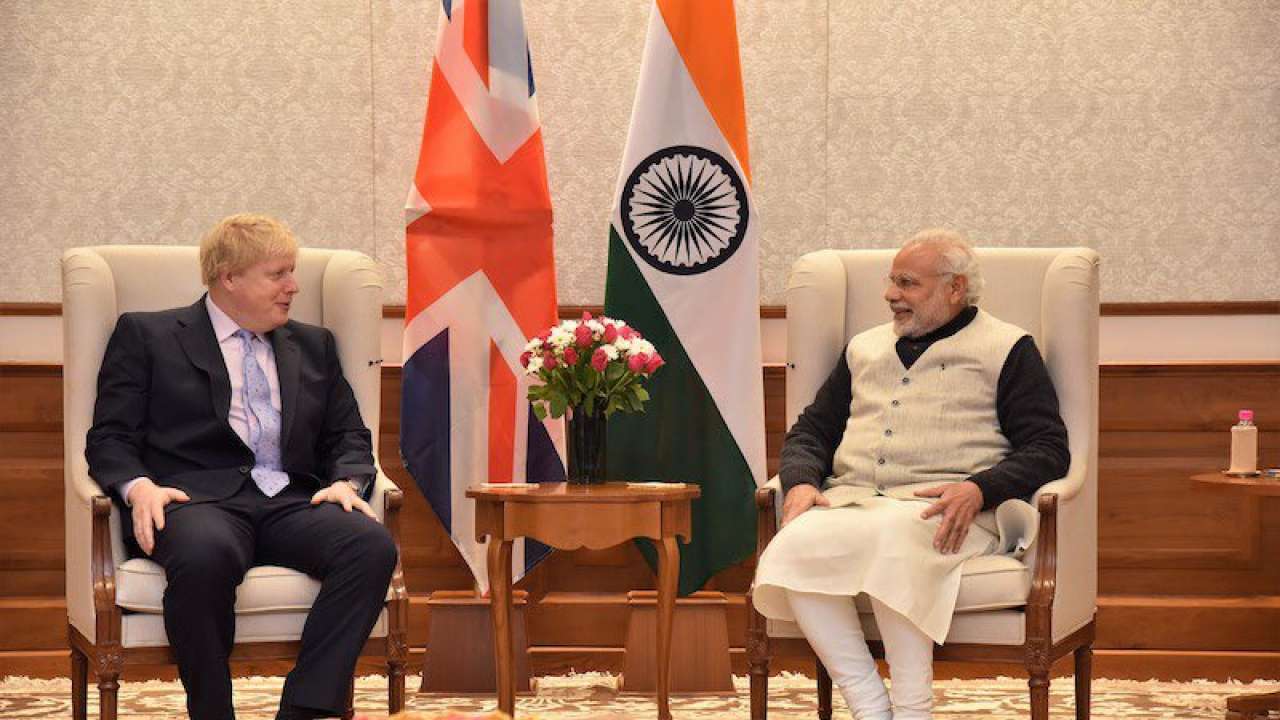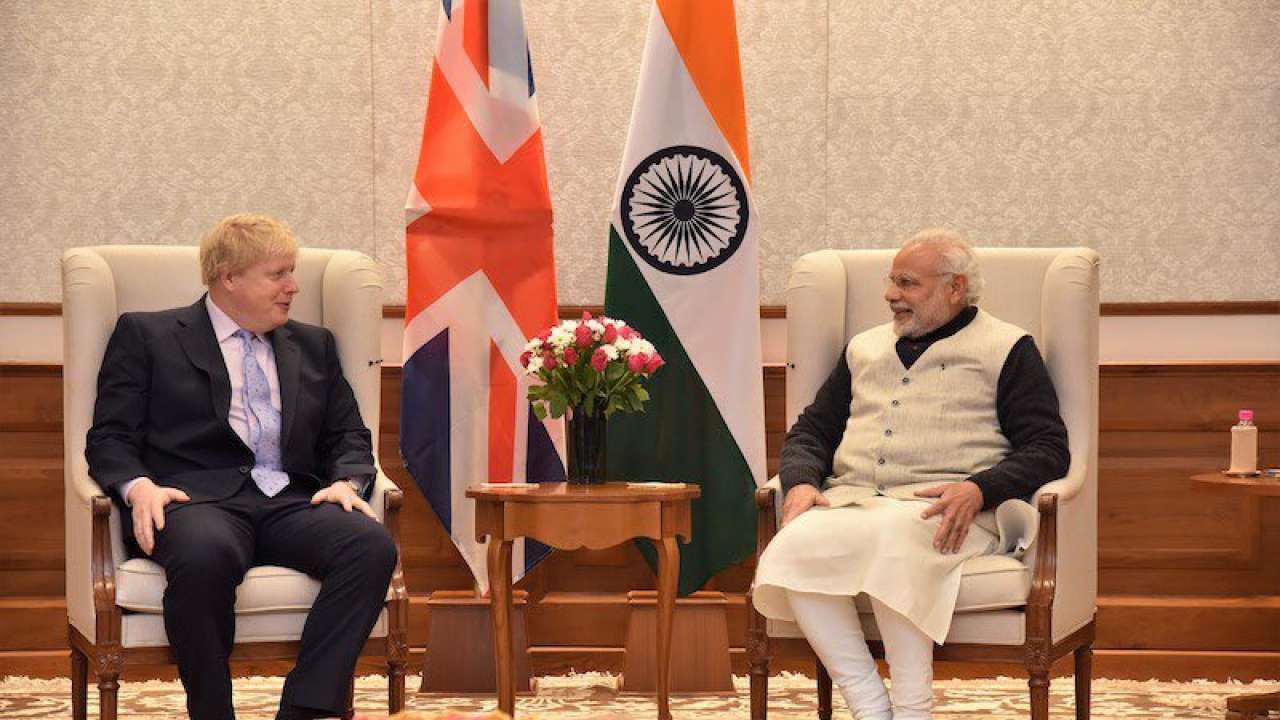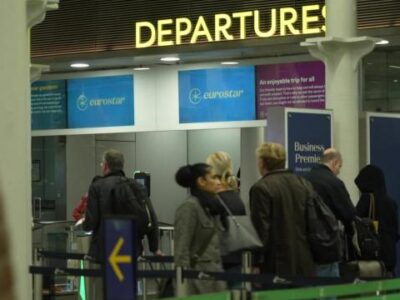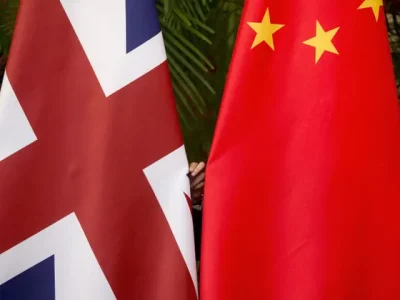The UK-India relationship is time-tested and historic, and Brexit has provided a perfect opportunity to enhance their trade relationship with FTA will be just one of these potential benefits. The key themes that underpin their relationship are trade, investment and finance, technology, security & defence, migration & home affairs and the Living Bridge. In the post-Brexit European order, Britain is looking for solid international partners to retain its position as a global investment destination and also at the top of the global order. As a result, stronger trade and economic ties with India have become a major political priority for London under Boris Johnson’s government. Indeed, Britain’s relations with India have never looked as promising as today but this narrative on bilateral relations remains mired in the past as Delhi can’t shake off the Pakistan prism in viewing London allowing an anti-India campaign by Pakistan from its soil.
It is, however, important to state that ambition to conclude a comprehensive UK-India trade agreement in the next few months should be taken with a large pinch of salt given India’s track record of starting negotiations but hardly finishing it on time. India pulled out of the Regional Comprehensive Economic Partnership, a club of 15 nations in the Asia-Pacific region that together count for 2.2 billion people and 30 pc of a global economy with collective GDP of USD 29.7 trillion, is also a reminder of India’s unstable free trade policies. Because of the complexity of the issues involved and the complicated structure of the EU which hampers the trade negotiations rather than helping in solving it, concluding UK-India free trade agreement looks promising. The issues involved in the UK-India trade negotiations are no different from the EU-India trade negotiations but what is different is that here two countries are on the same wavelength but in the case of the EU, the agreement goes to several political layers of the decision-making process and even one “disagreement” can jeopardise the whole agreement, as it happened in the case of EU-Canada FTA when a small province in Belgium Wallonia created a very discomforting situation for EU.

One of the reasons for India going slow on EU-India FTA negotiations could be that India first wants to test the ground realities with Britain. An FTA with the UK could be a model on which India could negotiate with the EU. We could also say that the fate of the EU-India FTA depends upon the outcome of UK-India FTA negotiations.
Brexit was a “Himalayan Blunder” for which both Britain and all members countries of the EU are responsible. It is true that Brexit freed Britain from the chaos of EU’s endless bureaucratic grinding machine to chart its own course, but one cannot disagree that Britain will have to keep chasing the major trade initiatives EU is taking across the globe so that it is not outshined. In 2020, the European Union published its new EU-India Strategic Partnership: A Roadmap to 2025 which is no different from UK’s Roadmap to 2030 published last year which paves the way for UK-India FTA. The objectives of the two are so similar that one can get confused as it is apparent that the strategic importance of India for the EU and Britain revolves around the same parameters.
Back home in India, the repeal of the three farm laws has weakened Prime Minister Modi’s authority and dented his image as a reformist PM. It was a testing time for Indian democracy as people’s power displayed on the streets prevailed over Parliament. It shows how complicated Indian democracy is and how difficult is to make economic reforms. This is not good news for the reform agenda in India as each major economic decision or a major trade agreement will be scrutinised on the streets. In London, the “Partygate” Scandal has badly bruised PM Johnson and it is difficult to assume his fate. However, Britain’s relations will not be affected even if Johnson has to go, as all major parties in the UK are of the strong view to solidifying relations with India.
As UK-India trade negotiations advance, the EU will be under increasing pressure to steal the momentum and start negotiating the FTA. Any UK-India FTA will also shake the EU’s powerful bureaucracy in Brussels, and they will have to realise that concluding a trade agreement requires a vision of today’s realities and tomorrow’s challenges.
India and the United Kingdom have recently concluded their first round of discussions for a potential free trade agreement that both countries are keen on, though for different reasons.
Five years ago, on June 23, 2016, the British people stunned the world by voting yes in the referendum on Brexit. Although the countdown to leave the European Union began in the British summer, Britain had already been working towards establishing direct trade and economic relations with India and major partner countries irrespective of the outcome of the Brexit process. While Brexit created a new opening for the UK to pursue its free trade and economic policies independent of the European Union, it also offered the country a chance to rekindle its trade policies with Commonwealth member states especially with India, Canada, and Australia. Since the Brexit, Europe has changed and so has India, and both have realised that strong economic ties are the bedrock of meaningful strategic relations.
In a virtual meeting on May 4, 2021, UK Prime Minister Boris Johnson and his Indian counterpart Narendra Modi took a significant step for the future of India-UK relations in signing the 2030 Roadmap for India-UK Relations, which outlines plans for the relationship over the next 10 years. Britain and India want to double trade between their two countries by 2030, up from about USD 31 billion in 2019. Soon after Brexit, the UK has been keen on a free trade agreement with India, but the Indian government was reluctant to go ahead with the discussions as it first wanted to see the terms and conditions of Brexit between the UK and the EU.
When British International Trade Secretary Anne-Marie Trevelyan and Indian Commerce Minister Piyush Goyal met in New Delhi in January to kick off the free trade talks, British Trade Secretary arrived wearing traditional Indian costume Salvaar and Kameez. Perhaps, the message from London was that “We British and Indians have shared past and common future and we are together in the new world order.” The two sides hope to finalise a comprehensive deal within this year.
The first round of negotiations for the bilateral free trade agreement concluded on January 28. The talks covered 26 policy areas including trade in goods and services such as financial services and telecommunications, investment, intellectual property, customs, sanitary and phytosanitary measures, technical barriers to trade, gender, sustainability, and geographical indicators. The negotiations were held virtually for over weeks and saw the coming together of technical experts from both counties for discussions in 32 separate sessions. The second round of negotiations is due to take place on March 7-18. The Indian negotiating team is led by Nidhi Mani Tripathi, joint secretary, Department of Commerce and the UK negotiating team by a person of Indian origin, Harjinder Kang, director for India Negotiations at the Department for International Trade. This is a perfect negotiating combination with two persons with a shared heritage representing their countries on the table. One must learn from the British way of doing things strategically with a personal touch with a PIO representing Britain. This also reflects how the Indian diaspora has become a part of British life.
The joint statement issued by Goyal and Trevelyan reiterates the targets set by Johnson and Modi last year and states that the India-UK bilateral trading relationship is already significant, and both sides have agreed to double their bilateral trade by 2030, as part of Roadmap 2030 announced by the two PMs. The joint statement added that India and the UK sought to reach a mutually beneficial agreement supporting jobs, businesses and communities in both countries. This is the most ambitious round of trade talks that Britain has launched since Brexit. The UK is looking to bolster its trade volumes, which have taken a major hit since leaving the European Union.
![]()






